Are you a Quiet Speculation member?
If not, now is a perfect time to join up! Our powerful tools, breaking-news analysis, and exclusive Discord channel will make sure you stay up to date and ahead of the curve.
I'm writing this from an airplane on its way out of Atlanta, fresh off a wild weekend doing live on-site coverage of Pro Tour Oath of the Gatewatch (OGW). For a 20-year veteran of Magic: The Gathering, walking among the 300+ best players on Earth on the 20th anniversary of the Pro Tour was somewhat surreal.
As working press, I was able to spectate every match of the tournament and what I saw in the trenches will surprise no-one. Eldrazi. Everywhere. The scourge of Zendikar, the unfathomable abominations of the Blind Eternities, the mindless, ravening, blasphemous Old Gods. It was the Massacre at Sea Gate all over again. (Too soon?)
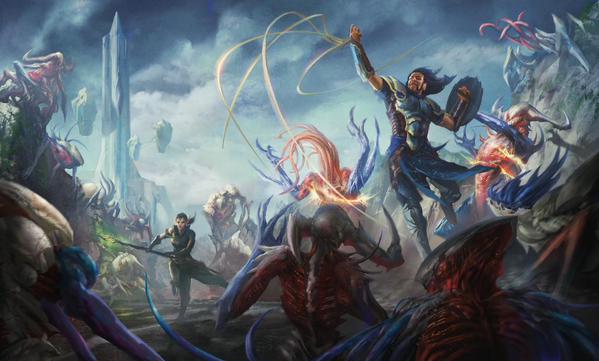
The greatest villains of the Multiverse performed so well at the Pro Tour that they might end up on a Hall of Fame ballot one day---any Magic player would love to make the Top 8 cut at a Pro Tour, let alone on their first try. The Eldrazi of OGW did it six times. I guess the best part about being an endless legion from interplanar space is that you can defy and distort the fundamental laws of the Multiverse at your whim to be in more than one place at the same time. Must be nice.
Oath Makes Its Mark
In all seriousness, Pro Tour OGW may be unique in this regard. Indeed, this Pro Tour was well and truly defined by its eponymous set release. It's difficult for new cards to gain a foothold in an established Standard metagame with five or six sets. The fact that OGW cards decisively defined our Top 8 in a format with fifty legal sets is simply remarkable, and a testament to the power level of OGW.
As we ran our statistical analysis of the top tables every few rounds, the data continued to imply what we would all come to know as true. At almost every round of the tournament, the Eldrazi decks were, point for point, the best and most common decks in the room. Quite simply, I've never seen anything like it in my 20+ years in the game.
Watching the utter dominance of Eldrazi decks, fueled by Eye of Ugin and Eldrazi Temple, reminded me of last year's U/R Delver featuring the now-banned Treasure Cruise.
When I was playing U/R Delver, I was well aware that "the boat" might not be long for this format. Indeed it was not, and for good reason. Ancestral Recall isn't a fair card, even at sorcery speed, even if you need to exile your entire graveyard to cast it, and the format simply warps around its existence. Dig Through Time was also banned at the same time, and correctly so.
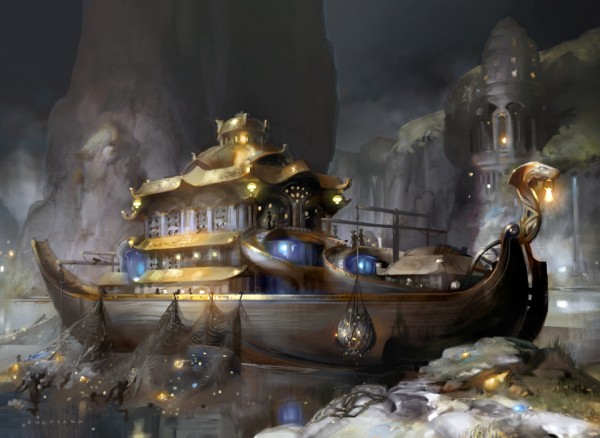
This also became true with Splinter Twin, which met the same fate for similar reasons. Either play with Splinter Twin, or play to beat it. Once again, it warped a format around its existence and now, justifiably, it's toast. Same with Summer Bloom, which joined Splinter Twin in the Modern sin bin.
These bans were all warranted and, I believe, correct and beneficial to the balance of Modern Magic. These bannings kept the metagame open and healthy, and they seemed as though they would help avoid a bipolar format---there wasn't a clear "beat it or join it" deck going into this Pro Tour.
Well, that has changed, hasn't it? And in the biggest way. The feeling that came over me as I watched Eye of Ugin power out four mana worth of value on turn one, or five mana on turn two (Thanks Urborg!), was similar to what I experienced during that brief period I was able to cast Ancestral Recall in Modern. I felt, in my gut, that something fundamentally wrong was happening in front of me. I don't mean wrong as in "incorrect;" I mean wrong as in "stealing from children" and "kicking puppies." Viscerally, morally, wrong.
But it certainly made for awesome spectating and coverage, and some really quick tournament rounds. I was expected to remain silent when spectating matches, but I must admit that I whispered, "oh snap," louder than appropriate, more than once. I positively screamed it in my own mind.

I'll be blunt---I believe that Eye of Ugin should be removed from the Modern format. I imagine the designers of OGW are thrilled to see their most recent creations dominating at the highest level of play, but I must wonder if they expected it to be as dominant as it was this weekend.
There was almost certainly no discussion of inexpensive, colorless Eldrazi creatures when Eye of Ugin was designed, but during work on OGW they must have been cognizant of Eye and the potential for problems. I also must assume they realized they were pushing the power level of some of the colorless cards. So, perhaps they saw the explosive potential of this deck or perhaps they did not. Either way, now we all know.
Lands should not produce two mana. Sometimes they do, but at great cost. Lands really shouldn't produce more than two mana; that's Black Lotus territory. The lands that produce more than two mana generally don't net you more than two mana---Lotus Vale and Scorched Ruins devour your other lands in exchange for their raw power.
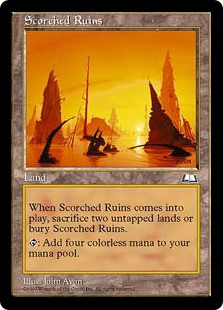
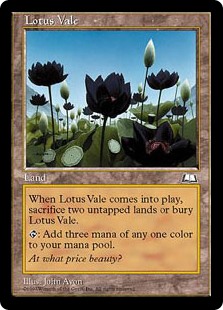
But five mana? That's just ridiculous, especially when it's used to cast cards as absurd as Thought-Knot Seer and Reality Smasher. No, this won't do at all. Eye of Ugin should not be legal in Modern, but alas, we've got months to go before a banning is even considered.
Working With the New Meta
That's why this essay isn't titled "ZOMG BAN EYE OF UGINNNN!" We have this deck for at least a few months, so let's work with it. I heard a familiar refrain all weekend: "Modern is a solved format." "Modern is dead." "The metagame has reached peak evolution." To this I say, the Pro Tour is a beginning, not an end.
We just saw the format "reset" by Twin and Bloom bans. We went back to basics (I mean, not literally, shock lands still rule) and introduced new cards to the pool. Then we asked the best players on Earth to stake their professional careers on their evaluation of the metagame.
Know what that means? It means we have a metagame again. Metagames are all about "levels." When you build for a Pro Tour in a wide-open format, you're at Level Zero. Everyone brews up a series of hypotheses and runs them through the gauntlet (literally), making adjustments.
By the time you settle on a deck list, you're almost at Level One. You've formed a fairly robust model of how you think the format works, you've validated it, tweaked it, and tested it. As it's said, no plan survives first contact with the enemy, so you don't really reach Level One until the tournament ends. Once you've got the deck lists, once you've crunched the numbers, once you've compared your working hypothesis to the field as a whole, then you're at Level One.
So, to everyone saying, "The format is solved," I say nothing could be farther from the truth. You can't call a format "solved" the day after it's only just been defined! I'm not sure what to call something after "square one." I've never heard anyone say, "well, now we're back to square two." But whatever the phrase may be, that's where we are. Now we know what's going on in Modern. Now we know the answer to the question, "Is the Eldrazi deck good in Modern?"
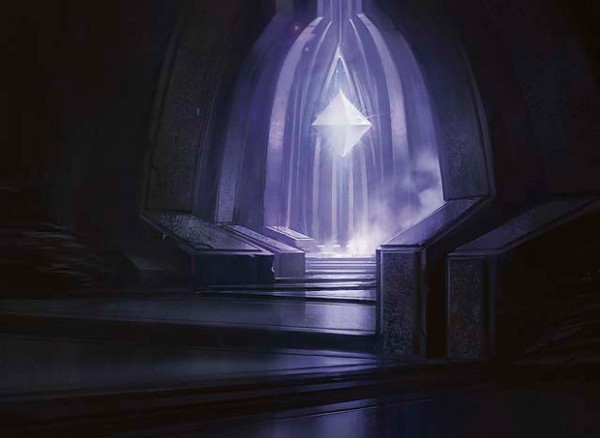
Yeah, it's good. In fact, now it's the deck to beat. It's funny how good a deck can be when no one builds to beat it. Just like the scariest monsters in horror movies are the ones left to the imagination, the scariest decks to play against are the ones you never saw coming. Now that we all know the Eldrazi decks, their tricks, their strengths and weaknesses, we know how to play against them.
See, this is when Magic gets fun. Part of what makes Magic amazing is the metagame. Games like chess and poker lack this aspect; perhaps a style of play or an opening sequence becomes en vogue, but the game pieces and underlying rules never change. So rather than sit around whining about how Modern sucks because one awesome deck dominated a tournament that 99.999% of Magic players didn't play in, let's look at the real impact this will have on the average Magic player.
It means you have to be ready to beat this deck at your next local Modern event. Figuring out how to beat a known deck at FNM is way easier than finding the secret breakout deck of a tournament full of the best players on Earth. I am the wrong person to definitively answer the question of how to beat the Eldrazi deck, but I can tell you what I saw this weekend and perhaps it'll give you some ideas.
Lessons in Defeating the Eldrazi Menace
Midway through Modern on Day 2, I watched Immanuel Gerschenson absolutely devastate a U/R Eldrazi player with Death's Shadow Zoo (a deck that didn't crack the Top 8, much to my surprise). He's a great player, but you don't need to be a pro to do what Gerschenson did.
First of all, he played an incredibly powerful and synergistic deck. DS Zoo is a brilliant concoction of spells that let you turn life points into resources, and rewards you for having a low life total. In case you weren't around when Necropotence or Yawgmoth's Bargain decks dominated, let me tell ya, nothing good has ever happened when decks can essentially use life points as mana.
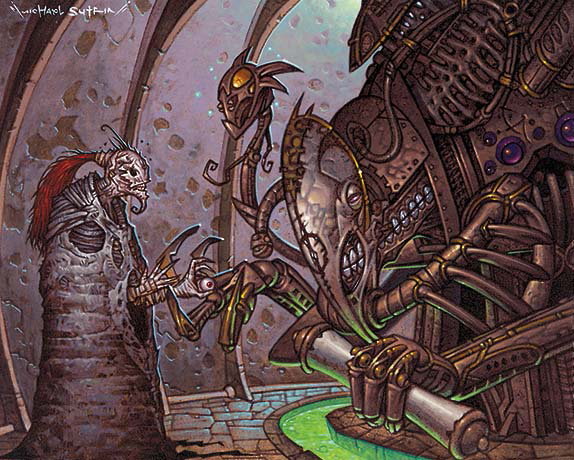
So, Lesson One: Play a deck that does unfair things. If you have to face decks with lands that make five mana, make sure you're not trying to win by grinding incremental value or attacking with Grizzly Bears.
Lesson Two will take some explaining: the game I spectated began with Gerschenson casting two Thoughtseize in the first few turns. The life loss from Thoughtseize is actually an asset in his deck (see lesson one, play unfair decks), but the important part here is that he prevented his opponent from reaching criticality.
In nuclear physics, criticality is the point at which a nuclear reactor is able to sustain its chain reaction. In Magic, it's the point at which a deck's own momentum will keep it ahead. When you're trying to solve a turn three Reality Smasher, you're not working on your own game plan, and you just get farther and farther behind until you're dust. Given the power level of the Eldrazi deck, you simply cannot afford to let them hit critical mass. Quite simply, you will die.
The Eldrazi deck hits criticality by resolving its creatures, not attacking. Even if you kill Thought-Knot Seer, you've probably been hit with a 4/4 Eldrazi Mimic at least once, and your new draw is likely not as good as the card it stripped out of your hand. Killing Reality Smasher is almost always a two-for-one, and not in your favor.Letting them resolve their spells just ain't an option.
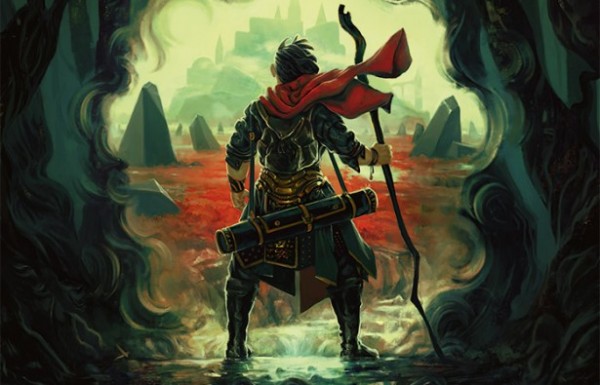
So, Lesson Two is, "Play a deck that can disrupt the opponent's plan before it develops." Gerschenson stripped all the gas out of his opponent's hand before it could become a problem.
All the Mimics in the world don't matter when they're not copying 4/4's and 5/5's. You can only play four Thoughtseizes, but perhaps other forms of hand discard or disruption could find a home in sideboards going forward. I can't stress how important this is---the U/R Eldrazi deck seemed to have a great opening hand, but it was positively shredded before it could materialize a real threat.
That brings us to Lesson Three, which means I need to tell you how Immanuel won the match-ending game. It was pretty awesome to watch. First, he subjected himself to an insane amount of self-damage. I counted two fetch lands, two shock lands, two Thoughtseizes and a Gitaxian Probe. He also took a bit of combat damage. Remember, the lower his life total, the larger Death's Shadow gets.
On the final turn of the game, Gerschenson was at three life, meaning his Death's Shadow was a 10/10. Not bad for a one-drop. His opponent was at a fairly large life total, and although I do not recall the precise number, it hardly matters.
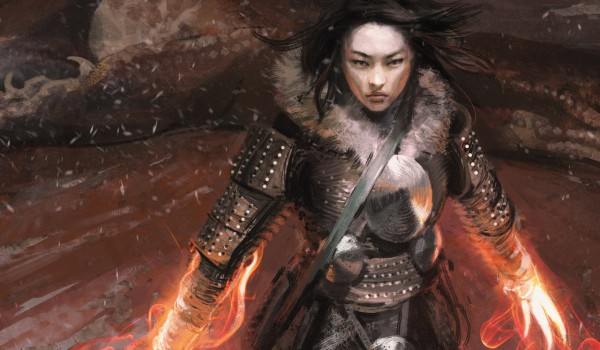
The 10/10 Death's Shadow attacked, and quickly reached 14/14 when a Mutagenic Growth brought Gerschenson's life total to one, effectively pumping the Death's Shadow's power and toughness by four. Not bad for zero mana. (See? Nothing good happens when you spend life like mana. Nothing. Ever.) A fully delved Become Immense paid the balance (again, not bad for one mana), and the U/R Eldrazi player would have been killed from his starting twenty.
Thus, Lesson 3 for beating the Eldrazi deck is, "Play a deck that's explosive enough to kill outright when given the opportunity." The Eldrazi deck works by applying insane pressure in the earliest stages of the game. If you force it onto defense, it loses a lot of its potency.
That's why the saying, "the best defense is a great offense," is so apt. Going back to Lesson Two, a powerful offense is a great way to disrupt an opponent and remove criticality. Flip the script on those nasty colorless beasts and watch them try to comprehend the concept of "blocking." I hear they make funny popping noises when they die.
Lesson Four is simple, and it dates back to the dawn of warfare and competition itself: "Know Your Enemy."
Gerschenson knew the Eldrazi deck had no way to force through damage, no burn spells. He knew he could drop to three life because he wasn't going to get Lightning Bolt'ed. He knew he could drop to one life because he wasn't going to eat a Gut Shot off the top (Sorry, Mr. Lepore. That one was brutal.) He knew what cards to strip away with Thoughtseize. And he knew that the Eldrazi deck hasn't much in the way of instant-speed removal that can deal with a 20/20 attacker.
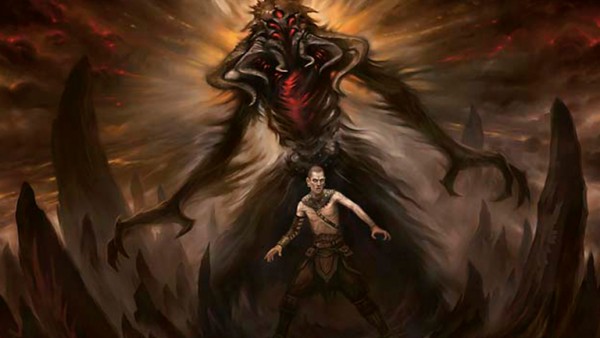
So, when it was time to stop toying with his prey like the legendarily cruel Shivan Dragon and deliver the final blow, he knew he was clear for takeoff. The attack landed, the hand was extended, the match slip was signed, and the Scourge of Zendikar lay defeated (at least for that moment, at that table. Hey, progress is progress, okay?)
~
So, armed with this knowledge, I strongly encourage you to begin brewing. This deck is beatable. It dominated the Pro Tour because no one was prepared for it. As I proved above, the deck is absolutely capable of losing. But like any worthy opponent, you must prepare for it. You must understand it. You must earn it.
Do I still think Eye of Ugin is an unfair card being used for something far beyond what its designers intended? Absolutely. Do I think it should be banned? You bet. But I don't think it needs an emergency ban. We can wait a few months. And who knows, perhaps the brilliant minds of the Magic community will find a sufficiently thorough plan to keep the deck in check and we won't need to issue a ban after all.
Either way, I have faith that this is the beginning of a very interesting metagame, not a concluding chapter in the Modern format. So, if you have a Modern FNM coming up, you've got your work cut out for you. You'd best get to work.


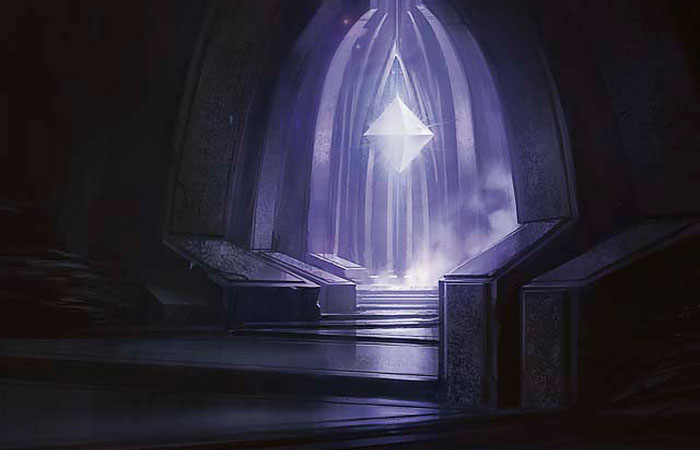



Kelly, this was a really fantastic write-up. Well done, we talked a lot about this on the QS Cast so we already had that dialogue but we all settled on the same sentiments.
Great job this weekend.
Thanks Chaz
I really hope death shadow aggro is the answer. ive got to unload these thoughtseizes and mishra’s baubles!
thanks for all the A+ coverage by the way!
Thanks for enjoying it!
Kelly is there a link to Immanuel Gerschenson deck somewhere?